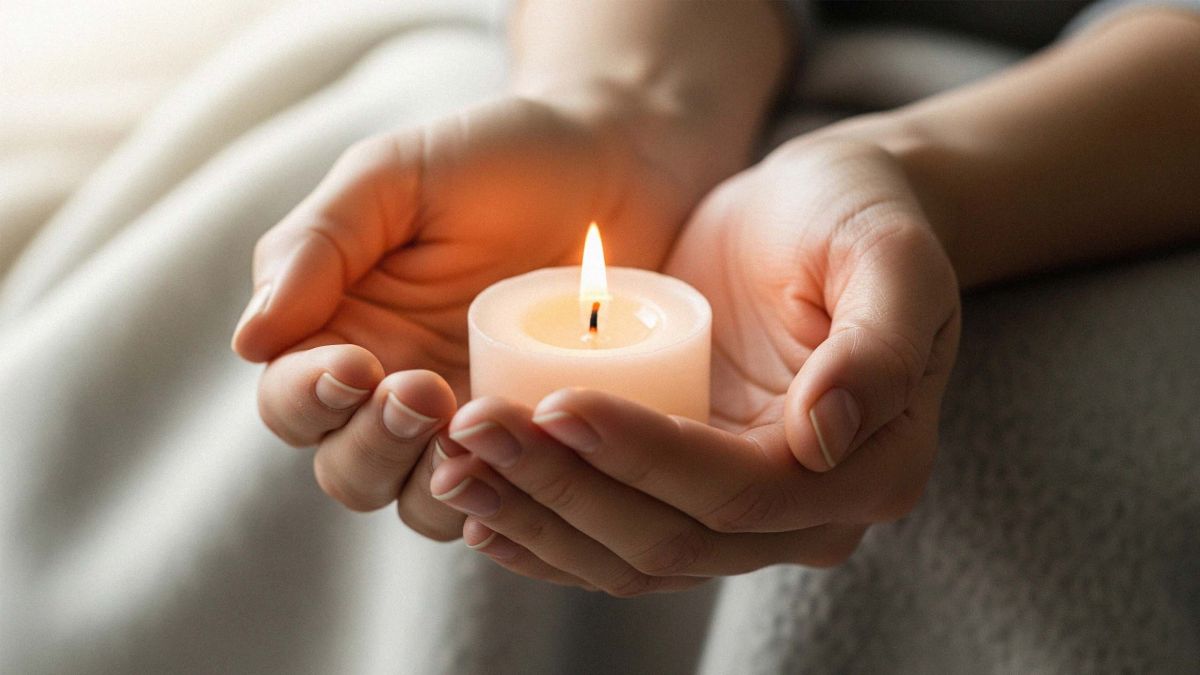10 Daily Rituals to Foster Emotional and Sexual Healing

Healing—whether emotional or sexual—is not a single milestone, but a gradual process that benefits from steady, intentional practices. The small things we choose to do each day can help rebuild trust in ourselves, reconnect us with our bodies, and restore a sense of balance.
These rituals aren’t quick fixes, but gentle tools to support healing over time. Think of them as daily anchors—practices you can return to when life feels overwhelming or disconnected.
1. Begin the Day with Stillness
Set aside a few minutes each morning to simply breathe and check in with yourself. This could be a short meditation, sitting with your coffee in silence, or writing a few lines in a journal. The goal is to ground yourself before the day’s demands take hold.
2. Practice Gentle Movement
Movement doesn’t have to mean an intense workout. Yoga, stretching, or even a walk around the block can help release tension stored in the body and encourage a sense of physical presence. Regular, gentle activity supports both mental clarity and body awareness.

3. Create a Sensory Sanctuary
Pay attention to your environment. Light a candle, play calming music, or bring in scents like lavender or sandalwood. These sensory cues can signal safety and calm, making it easier to relax both emotionally and physically.
4. Establish Nourishing Touch
Touch can be healing, whether it’s self-massage, moisturizing your skin with care, or wrapping yourself in a soft blanket. For some, touch has been a source of hurt—approaching it gently and on your own terms can help rebuild trust in the body.
5. Keep a Feelings Journal
Writing down emotions—even in short bursts—helps untangle them. A few minutes in the morning or evening to note how you’re feeling can bring clarity and reduce the weight of unspoken thoughts. Over time, you may notice patterns that highlight what soothes or triggers you.
6. Practice Conscious Breathing
Deep, mindful breathing can calm the nervous system and ease anxiety. Try inhaling for four counts, holding for four, and exhaling for six. Just a few rounds can shift your state and bring a sense of control back into your body.
7. Reconnect with Pleasure in Small Ways
Pleasure isn’t only sexual—it can be as simple as savoring a meal, enjoying the warmth of a bath, or listening to a favorite song. By noticing what brings comfort and joy, you gently retrain your body and mind to experience pleasure without pressure.
8. Speak Kindly to Yourself
Self-talk can shape how you feel about healing. Replace harsh inner criticism with kinder language. Saying things like, “I’m doing the best I can today,” reinforces patience and self-acceptance.
9. Set Boundaries with Intention
Boundaries are not barriers, but ways of protecting your space and peace of mind. Each day, notice where you may need to say “yes” or “no” more clearly—whether in conversations, relationships, or your own schedule.
10. End the Day with Gratitude
Before bed, reflect on one or two moments of calm, connection, or comfort from the day. Gratitude, practiced consistently, shifts focus toward what is working in your healing journey, rather than only what is missing.
Quick Reference: 10 Daily Rituals
| Ritual | Why it helps | Daily tip |
|---|---|---|
| Begin the Day with Stillness | Sets a calm baseline and improves awareness. | Start with 3–5 minutes of mindful breathing. |
| Gentle Movement | Releases physical tension; builds presence. | Try a 10-minute stretch or short walk. |
| Create a Sensory Sanctuary | Signals safety and aids relaxation. | Use one scent or sound consistently. |
| Establish Nourishing Touch | Rebuilds trust in physical sensation. | Self-massage or gentle lotion after shower. |
| Keep a Feelings Journal | Clarifies emotions; reveals patterns. | Three lines each morning or night. |
| Practice Conscious Breathing | Calms the nervous system quickly. | Try 4–4–6 breathing for 2–3 rounds. |
| Reconnect with Pleasure | Retrains the brain to accept safe pleasure. | Savor a food or a warm bath without distraction. |
| Speak Kindly to Yourself | Weakens self-criticism and builds patience. | Use one compassionate phrase each day. |
| Set Boundaries with Intention | Protects emotional energy; prevents overwhelm. | Practice saying “I can’t today” or “I need time.” |
| End the Day with Gratitude | Refocuses on what’s working and reduces rumination. | Name two small things you appreciated today. |
Final Thoughts
Healing doesn’t happen in sweeping gestures. It’s built in the quiet, steady choices you make daily. Whether you adopt one ritual or all ten, what matters most is consistency and gentleness with yourself. Over time, these small practices can help restore trust in your emotions, your body, and your capacity for connection.
Reader Questions — Quick Answers
A: Small shifts can happen within days for mood or stress; deeper emotional and sexual healing often unfolds over weeks to months. The point is steady practice, not speed.
A: Stop any practice that causes distress. Modify it to be gentler or replace it with an alternative (e.g., shorter breathing sets, silence instead of touch). Consider professional support if triggers persist.
A: Yes — by improving body awareness, reducing anxiety, and reintroducing safe pleasure, these rituals can create fertile ground for desire and intimacy to return, naturally and without pressure.
A: Not necessarily. Many people benefit from these practices on their own. If you’re working through trauma, persistent distress, or relationship issues, pairing rituals with professional support is often helpful.
A: Anchor a ritual to an existing habit (after brushing teeth, during your morning coffee). Start small (2–5 minutes) and aim for sustainable rather than ambitious routines.
Disclaimer: The articles and information provided by the Vagina Institute are for informational and educational purposes only. This content is not intended to be a substitute for professional medical advice, diagnosis, or treatment. Always seek the advice of your physician or another qualified health provider with any questions you may have regarding a medical condition.


 English
English  Deutsch
Deutsch  Español
Español  Français
Français 



